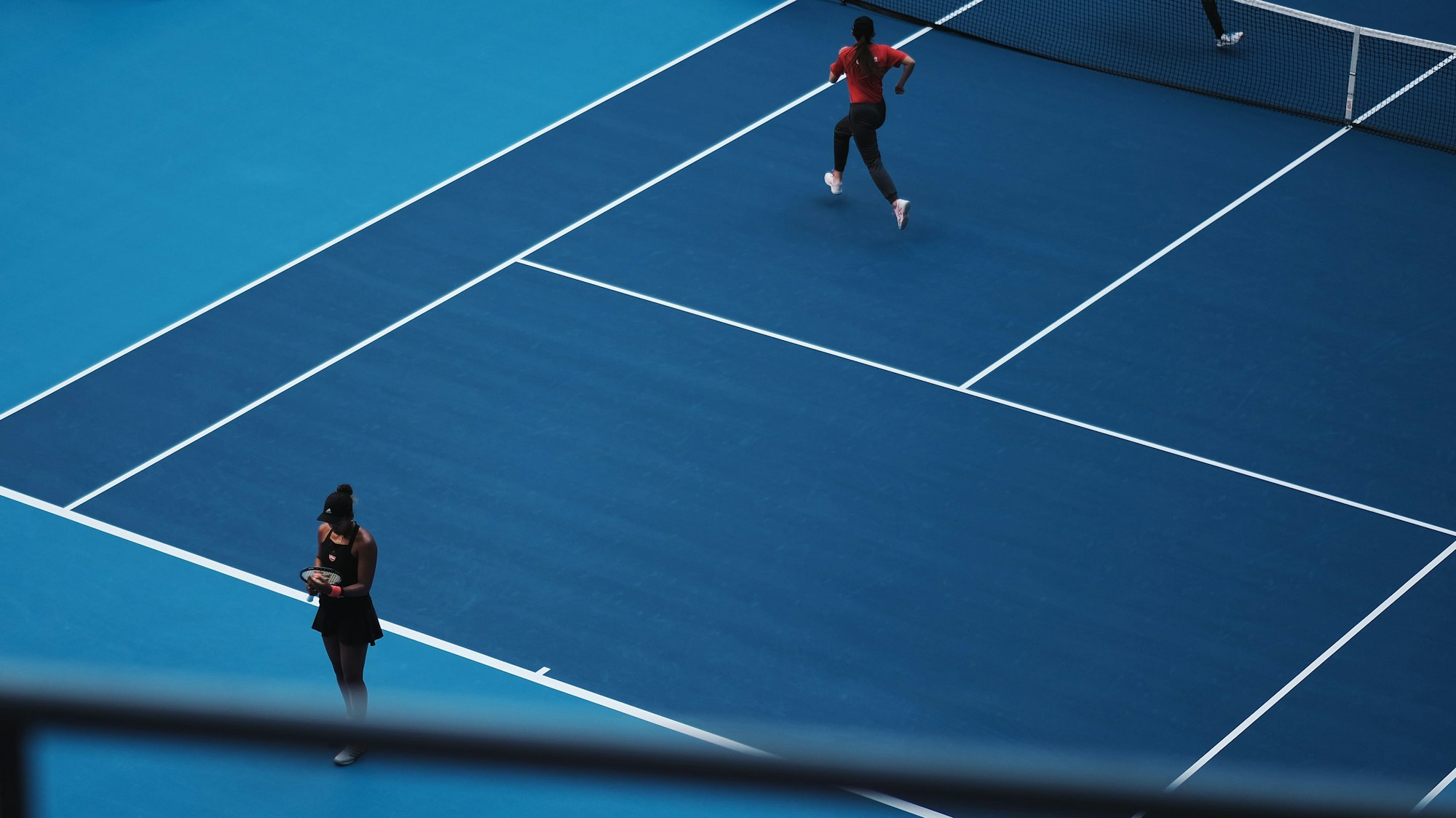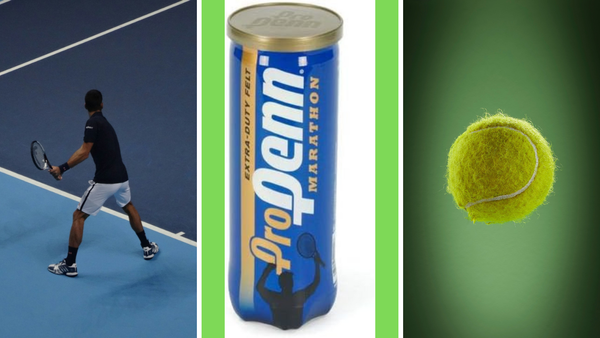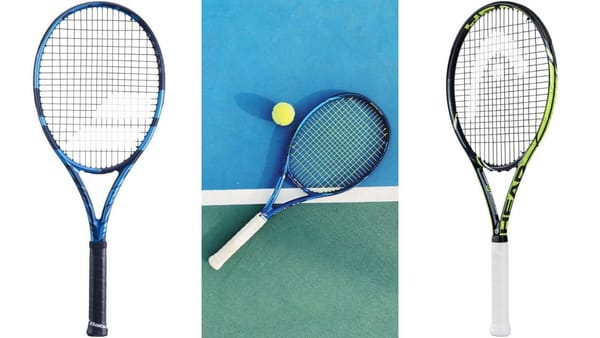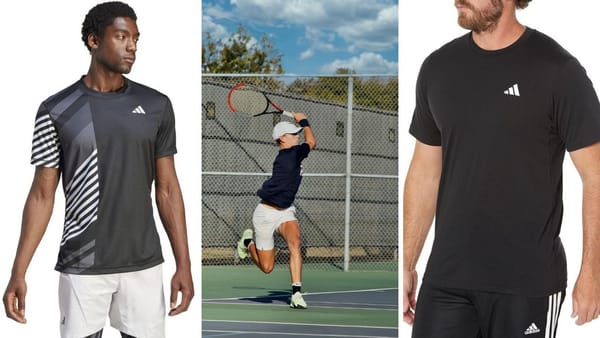In the fast-paced world of tennis, some shots require precision, agility, and split-second decision-making. One such shot is the tennis volley, a technique that can make or break a player's performance on the court.
This article will delve into the mechanics of the volley shot, its history, and its importance in the game of tennis.
History and Evolution
The tennis volley has been an integral part of the sport since its inception in the late 19th century. Initially, the volley was used as a defensive shot, allowing players to return the ball before it bounced on their side of the court.
Over time, athletes began to recognize the offensive potential of the volley, incorporating it into their strategies.
As the game evolved, so did the execution of the volley. Players started experimenting with different grips, footwork, and positioning to maximize their efficiency and control over the shot.
The volley went from being a simple blocking motion to a powerful and accurate weapon in a player's arsenal.
What is a Tennis Volley and How Is It Executed
Mechanics of the Shot
To execute a successful volley, proper technique is crucial. The grip is a fundamental aspect of the shot, with players using either the continental or the eastern grip.
The continental grip allows for more versatility and control, while the eastern grip provides stability and power.
Footwork plays a vital role in executing the volley. Players need to be quick on their feet, maintaining a balanced stance and moving towards the net with speed and agility.
The positioning is equally important, as players must be prepared to intercept the ball at the optimal point.
How To Perform The Volley in Tennis
The volley in tennis is a critical skill that requires precise timing, positioning, and technique.
To execute a successful volley, start by positioning yourself near the net, maintaining a semi-crouched stance with knees slightly bent and weight on the balls of your feet for agility.
Keep the racket head up and the grip firm but not tense. Anticipate the incoming ball by watching your opponent's movements and the trajectory of the ball.
As the ball approaches, use a compact swing with minimal backswing to make contact, directing the racket face towards the target.
It's crucial to meet the ball in front of your body, allowing for greater control and accuracy. To add power, use the opponent's pace by redirecting the ball rather than hitting it with excessive force.
After contact, follow through with the racket, and maintain focus on your opponent's next move.
Footwork is paramount; take small steps to adjust your position as needed. Mastering the volley requires practice to develop hand-eye coordination, timing, and control over the racket.
Consistent practice, coupled with a deep understanding of timing and positioning, will refine your volley technique, allowing you to confidently and effectively respond to net-play situations in tennis.

Benefits and Game-Changing Potential
The volley shot holds significant advantages, especially in doubles matches. Masters of the volley can dictate the pace of the game, putting pressure on their opponents and controlling the net.
A well-executed volley can be a game-changer, allowing players to finish points efficiently and seize control of the match.
Implementing the volley in one's repertoire is crucial for players of all levels. It not only enhances their overall game but also improves their strategic thinking and shot selection.
Whether it's a quick reflex volley or a well-placed drop volley, this shot can turn the tide of a match in an instant.
Consider a scenario where the opponents are engaged in a baseline rally. A player who confidently approaches the net and executes a precise volley can catch their opponents off guard, forcing them into defensive positions and potentially securing the point with a winning shot.
The volley shot brings an element of surprise and unpredictability to the game.

The Volley In Doubles Play
The volley shot in doubles tennis holds immense strategic importance, contributing significantly to the dynamics of the game. It serves as a pivotal tool for seizing control at the net, offering a swift and decisive response to shots in close-range exchanges.
In doubles, the volley allows players to assert dominance, putting pressure on opponents by cutting off angles and exploiting gaps in the court. It enables quick reflexes and precise placement, disrupting the rhythm of the opposing team.
A proficient volley can be a game-changer, facilitating aggressive net play and creating opportunities to finish points swiftly. Its effectiveness lies in its ability to neutralize powerful groundstrokes and capitalize on shorter, softer shots, allowing for aggressive put-away winners.
Moreover, a well-executed volley can elevate team coordination, fostering synergy between partners as they strategically position themselves at the net, covering the court effectively and maximizing their strengths.
In essence, the mastery of the volley shot is crucial in doubles tennis, not only for seizing control of the net but also for enhancing the overall strategic gameplay and teamwork.
The Half Volley
In tennis, there are a handful of shots players must master, such as backhand volleys, forehand volleys, a passing shot, and a swinging volley. However, one shot that can be easily overlooked is the half volley.
A half volley occurs when a player hits the ball immediately after the ball bounces, usually with a low racket face.
It can be a challenging tennis shot to pull off, but when executed correctly, it can give players an edge on the court.
One scenario where the half volley can come in handy is when a swinging volley breaks down. Instead of scrambling to hit a traditional volley, the player can opt for a half volley to avoid the ball bounce and maintain control over the point.
It's a versatile shot that every tennis player should have in their arsenal.

Improving Your Volley
To improve your volley, practice, and consistency are key. Incorporate volley-specific drills into your training routine, focusing on hand-eye coordination, footwork, and timing.
Work on maintaining a relaxed grip and practicing controlled shots to enhance your accuracy.
Expert advice recommends keeping your racket head above your wrist while volleying to achieve better control and precision.
Additionally, practicing volleys with a partner or coach can simulate real-game scenarios and help you develop your reflexes and decision-making skills.
Incorporate volley exercises into your warm-up routine before matches to fine-tune your muscle memory and build confidence.
By dedicating time and effort to improve your volley, you'll witness significant improvements in your overall gameplay.
Some Final Thoughts
The tennis volley is a shot that has stood the test of time and continues to be a vital aspect of the game. Its evolution from a defensive technique to an offensive weapon showcases its importance in a player's repertoire.
By mastering the mechanics of the volley and incorporating it into your practice routine, you can elevate your game and become a formidable force on the court.
So, get out there, practice your volleys, and unlock the game-changing potential of this dynamic shot.

FAQ's
What is a volley shot in tennis?
A volley shot in tennis is a stroke executed by hitting the ball before it bounces on the court. It's often performed near the net, requiring quick reflexes and precise hand-eye coordination.
When is the volley shot typically used in a tennis match?
Volleyshots are commonly used when a player is positioned closer to the net, responding to an opponent's shot that hasn't bounced yet. It's frequently employed in doubles play and as a way to put away shorter, weaker shots.
What are the main types of volleys in tennis?
There are two primary types: the forehand volley and the backhand volley. The forehand volley is executed on the dominant hand's side, while the backhand volley is played on the non-dominant hand's side.
What is the technique for a successful volley shot?
The key to a successful volley involves a firm wrist, a compact swing, and maintaining a solid, stable position with the feet. The goal is to redirect the ball with control and accuracy, often using short, controlled movements.
Can volleys be offensive shots in tennis?
Yes, volleys can be both offensive and defensive. They can be used aggressively to put pressure on the opponent or defensively to neutralize an opponent's shot. Skilled players often use volleys to end points quickly.
What are some common mistakes made when attempting a volley shot?
Common errors include excessive swinging, incorrect positioning, failing to watch the ball, and not adjusting quickly to the ball's speed or direction.
Should players approach the net to execute a forehand volley?
Approaching the net can increase the likelihood of hitting a successful volley, but it's not always necessary. Players can execute volleys from various positions on the court.
Is the volley shot more effective in singles or doubles tennis?
Volleyshots are valuable in both singles and doubles tennis. However, they are particularly crucial in doubles, where the proximity to the net and rapid exchanges often demand quick volleying skills.
Can a player hit a winner with a backhand volley or a drop volley?
Yes, players can hit winners with well-placed and skillfully executed volley shots, especially when they place the ball out of their opponent's reach or use angles effectively.
How can one improve their volleying skills in tennis?
Regular practice, focusing on footwork, timing, and precision, is essential for improving volleying skills. Working with a coach and engaging in specific volley drills can also help enhance technique and reflexes.
These FAQs cover the basics of volley shots in tennis, offering insights into their technique, application, and their significance in the game.
Conclusion
So, What is a tennis volley and how is it executed? Well, my friend, it's when you hit the ball before it even has time to bounce. Think quick reflexes and hand-eye coordination.
There are different types of volleys, such as the lob volley, block volley, punch volley, and swing volley. Don't worry, you don't need to be a pro to execute these shots (but it certainly helps).
Just make sure you're using the correct technique for the shot you want to make. And let's not forget the importance of the tennis ball in this endeavor. Without it, we'd just be swinging our rackets wildly at nothing.
So, in summary, the tennis volley requires skill, precision, and good old-fashioned luck. Give it a try and who knows? Maybe you'll have the finesse of a seasoned pro.













Member discussion